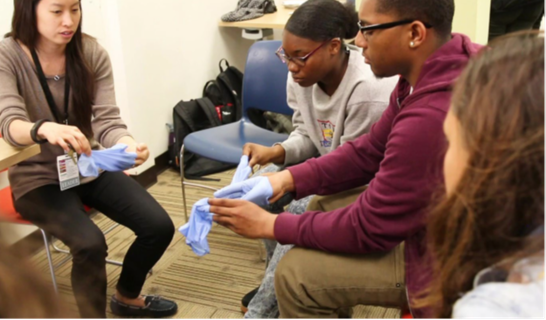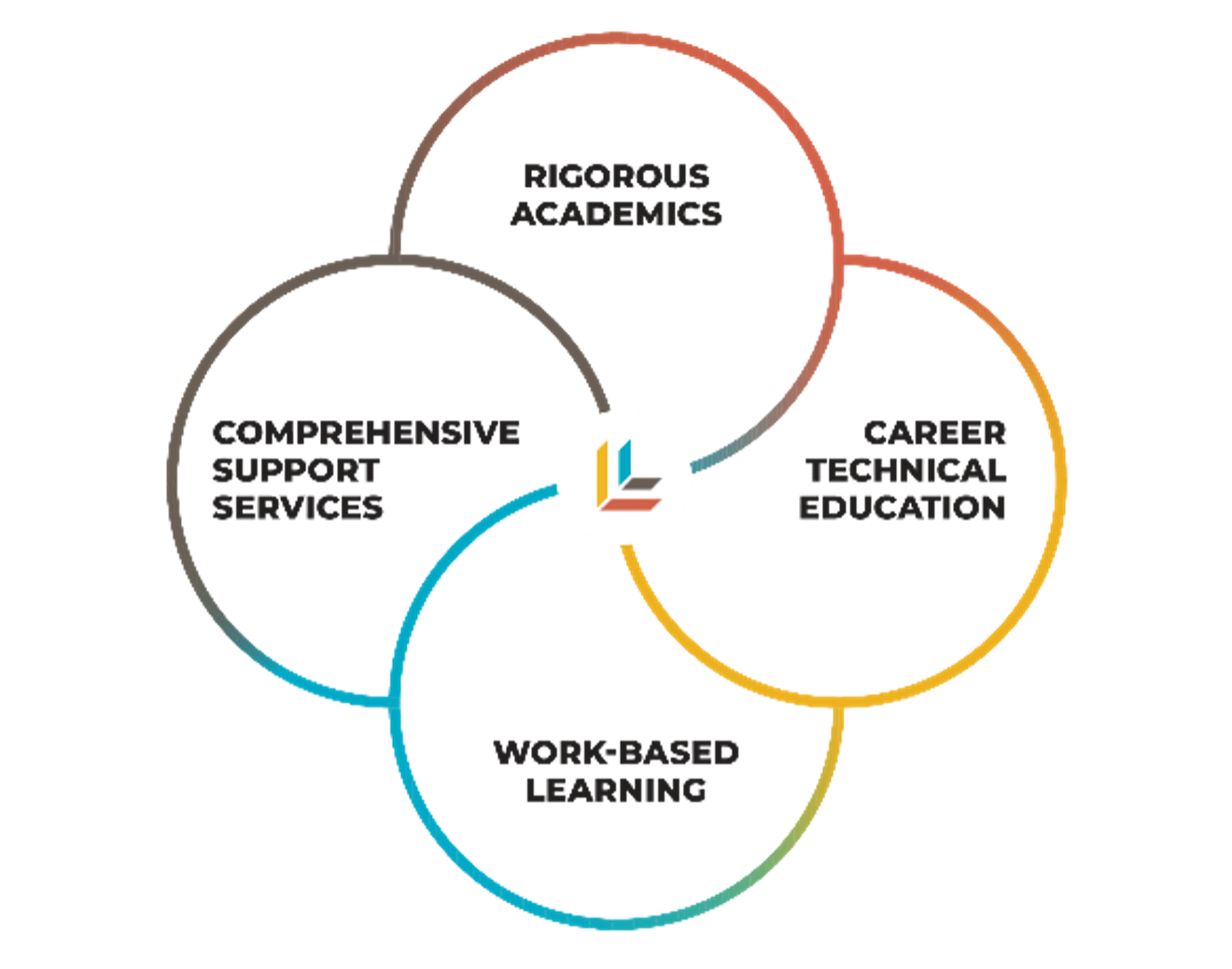by Laura Kassner
May 25, 2021

The What
Education and industry partners formed a partnership known as the Oakland Health Pathways Project (OHPP), designed to improve education and long-term employment outcomes for youth of color in Oakland California while expanding and diversifying the local health care workforce. Together, they expanded Linked Learning pathways in the health care field at district high schools to engage students more deeply in their learning and prepare them for the transition to college or career, creating a viable postsecondary work opportunity in a community with a significant rate of poverty (around 30%).
The How
The Linked Learning approach meaningfully integrates classroom and career, organizing education around industry-specific pathways and integrating four pillars:
- Rigorous academics that meet college-ready standards
- Sequenced, high-quality career and technical education
- Work-based learning
- Comprehensive support services
To bring this to life, one high school in OHPP focused their pathway theme on community health, with coursework and guest speakers focusing on the underpinnings of social determinants of health, such as stress from adverse childhood experiences, lack of medical care, and exposure to drugs and environmental toxins. Students explored their personal health and produced community health assessments through work-based learning, and core academic teachers chose books and classroom materials that explored intersecting themes, such as medical ethics in The Immortal Life of Henrietta Lacks.
This integrated approach is well-established—both nationally and in the district—but, would the health-themed pathways yield meaningful results in Oakland when compared with students in traditional high school experience pathways?
We note that the district was transitioning to implementing career pathways for all students, so the traditional comparison group was diminishing—a limitation of the study worth acknowledging.1
So What?
The results of the study yield reason for great optimism. When compared to traditional high school students in the same district, health pathway students significantly outperformed in the following areas:
- Course credits earned (almost 8 more credits from 10th–12th grade)
- Number of college eligibility requirements met
- On-time Graduation (by 11 percentage points)
- College enrollment (by 20 percentage points among those who completed high school)
These findings related to greater credits earned, high school graduation, and college enrollment are consistent with the results from other research on Linked Learning.2 And beyond these very tangible and measurable benefits, there’s more in regard to the “soft skills” that employers often cite as critical for new hires. Health pathway students reported gains in confidence, self-efficacy, and a sense of belonging. They also clarified their career goals and gained a better understanding of a profession, in addition to gaining knowledge and skills that made them feel more career ready. Simply put, OHPP improved outcomes in a vulnerable student population in measurable and powerful ways.
To Learn More…
For more information on the methods, limitations, and detailed findings of the OHPP evaluation, please check out SRI’s research briefs Student Outcomes in Health Pathways and Student Experiences in Health Pathways. And this research is featured in a recent Edsource article: Students thrive in Oakland Unified’s health career pathway, study finds.
Footnotes
2SRI’s multi-year evaluation of the Linked Learning District Initiative found that students who participated in certified pathways had decreased dropout rates, higher graduation rates, more credits earned, and more college eligibility requirements completed than their peers. Additionally, the study found that Linked learning students who entered high school with low levels of academic preparation were more likely to enroll in college directly after high school. For more information on SRI’s multi-year evaluation of the Linked Learning District Initiative, see p.13 of Student Outcomes in Health Pathways.
Topics: Access and equity Career and technical education Integrated college and career pathway approaches Linked learning Low income Research and evaluation Students of color Transition to postsecondary Work-based learning

